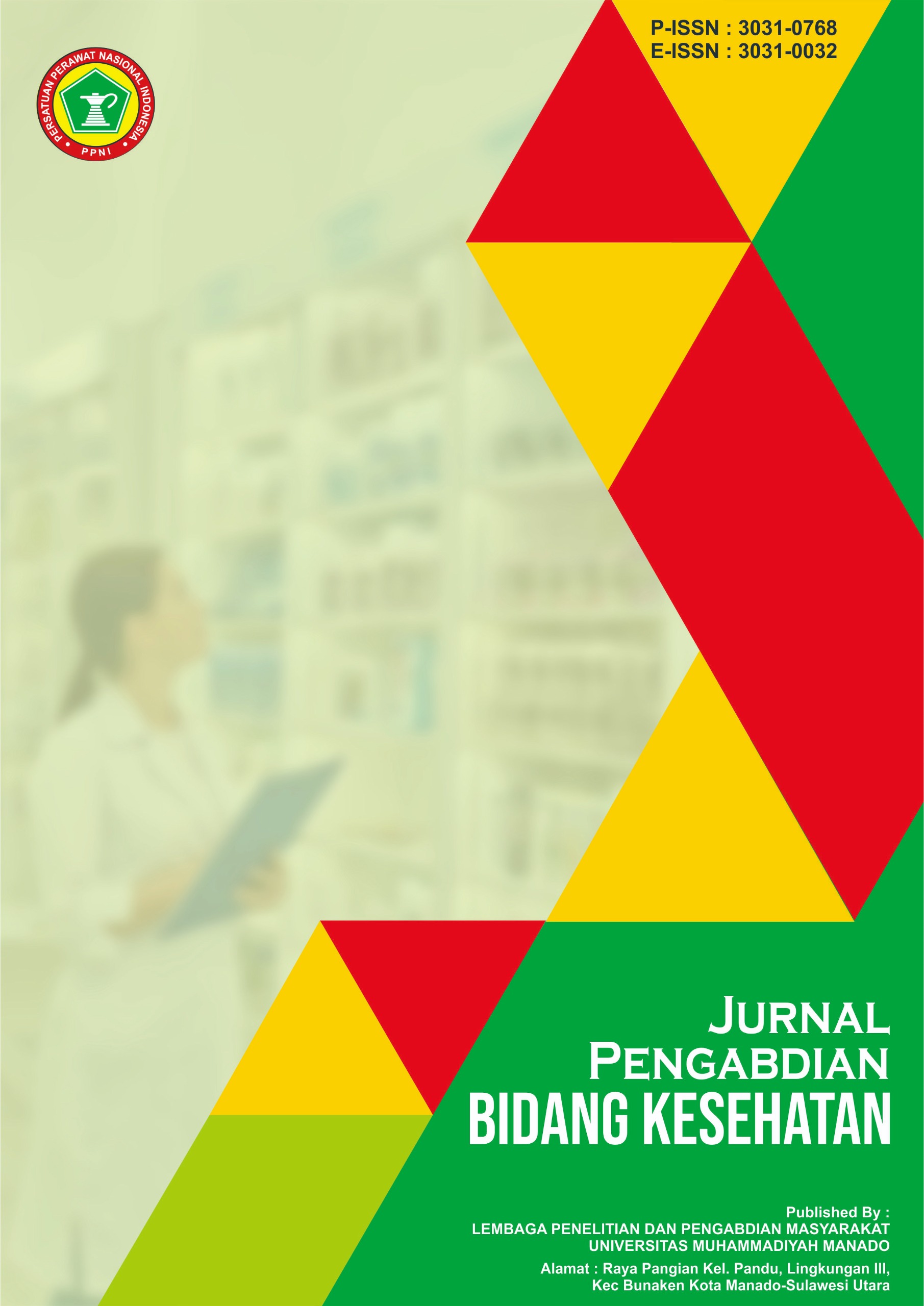Edukasi Gizi Seimbang pada Anak sebagai Upaya Pencegahan dan Penurunan Stunting di RW 03, Kelurahan Pulo Gebang, Kecamatan Jakarta Timur
DOI:
https://doi.org/10.57214/jpbidkes.v3i2.197Keywords:
Education, Nutrition, StuntingAbstract
Stunting is a growth and development disorder in children caused by chronic malnutrition, repeated infections, and lack of psychosocial stimulation. It remains a major public health issue in Indonesia, which ranks second in Southeast Asia for stunting prevalence among toddlers. According to the Asian Development Bank (ADB), the prevalence was 31.8% in 2020. Although declining, the national prevalence remained high: 30.8% in 2018, 27.7% in 2019, 24.4% in 2021, and 21.6% in 2022. These figures still exceed the World Health Organization’s (WHO) maximum threshold of 20%. The Indonesian government aims to reduce the prevalence to 14% by 2024.One key intervention to address stunting is balanced nutrition education for children and their caregivers. This educational approach targets mothers and local health cadres to increase awareness of adequate and quality nutrition for child development. Community empowerment plays a vital role in this effort, particularly in enabling early detection and response to stunting risks.To support this, a Community Service initiative was implemented through a program by the Midwifery Department at Poltekkes Kemenkes Jakarta III. The team developed and provided educational media to assist communities in understanding and applying good nutrition practices, thereby contributing to stunting prevention at the grassroots level.
References
Andriany, A., Ahmar, H., & Sianturi, S. H. (2025). Mitigating child stunting: Community-based strategies in Maibo Village, Sorong Regency, Indonesia. Journal of Current Health Sciences, 5(2), 91–96. https://doi.org/10.47679/jchs.2025114
Black, R. E., Victora, C. G., Walker, S. P., Bhutta, Z. A., Christian, P., De Onis, M., et al. (2013). Maternal and child undernutrition and overweight in low-income and middle-income countries. The Lancet, 382(9890), 427–451. https://doi.org/10.1016/S0140-6736(13)60937-X
Csölle, I., Felső, R., Szabó, É., Metzendorf, M. I., Schwingshackl, L., Ferenci, T., et al. (2022). Health outcomes associated with micronutrient-fortified complementary foods in infants and young children aged 6–23 months: A systematic review and meta-analysis. The Lancet Child & Adolescent Health, 6(8), 533–544. https://doi.org/10.1016/S2352-4642(22)00133-3
Dinas Kesehatan Provinsi DKI Jakarta. (2022). Profil Kesehatan DKI Jakarta Tahun 2022 (pp. 1–246). Jakarta: Dinkes DKI Jakarta.
Fitriani, Barangkau, M. H., Ruslang, E. H., Khaeria, et al. (2022). Cegah stunting itu penting! Jurnal Pengabdian Kepada Masyarakat Sosiosaintifik, 4(2), 63–67.
Guyatt, H., Muiruri, F., Mburu, P., & Robins, A. (2020). Prevalence and predictors of underweight and stunting among children under 2 years of age in Eastern Kenya. Public Health Nutrition, 23(9), 1599–1608. https://doi.org/10.1017/S1368980019003692
Hati, F. S., & Pratiwi, A. M. (2019). The effect of education giving on the parent’s behavior about growth stimulation in children with stunting. NurseLine Journal, 4(1), 12.
Kementerian Kesehatan Republik Indonesia. (2018). Strategi nasional percepatan pencegahan stunting 2018–2024. Jakarta: Kementerian Kesehatan RI.
Kementerian Kesehatan Republik Indonesia. (2022). Buku saku hasil Survei Status Gizi Indonesia (SSGI) tahun 2022 (pp. 1–7). Jakarta: Kemenkes RI.
Kristiyanti, R., Khuzaiyah, S., & Susiatmi, S. A. (2021). Gambaran pengetahuan tentang stunting dan sikap ibu dalam mencegah stunting. Sekolah Tinggi Ilmu Kesehatan Muhammadiyah Klaten, 1043–1046.
Lassi, Z. S., Rind, F., Irfan, O., Hadi, R., Das, J. K., & Bhutta, Z. A. (2020). Impact of infant and young child feeding (IYCF) nutrition interventions on breastfeeding practices, growth and mortality in low- and middle-income countries: Systematic review. Nutrients, 12(3), 722. https://doi.org/10.3390/nu12030722
Masitah, R. (2022). Pengaruh pendidikan gizi terhadap pengetahuan ibu berkaitan dengan stunting, ASI eksklusif dan MP-ASI. Journal of Innovation Research and Knowledge, 2(3), 673–678.
Tam, E., Keats, E. C., Rind, F., Das, J. K., & Bhutta, Z. A. (2020). Micronutrient supplementation and fortification among children under-five in low- and middle-income countries. Nutrients, 12(289), 1–30. https://doi.org/10.3390/nu12020289
UNICEF Indonesia. (2020). Menurunkan stunting di Indonesia: Intervensi gizi spesifik dan sensitif yang terbukti efektif.
Universitas Pasundan. (2024). Empowering women as agents of change in reducing stunting in Indonesia. Info Empowerment & Stunting Review, 14(2), 104–112.
Wati, S. K., Kusyani, A., & Fitriyah, E. T. (2021). Pengaruh faktor ibu (pengetahuan ibu, pemberian ASI eksklusif & MP-ASI) terhadap kejadian stunting pada anak. Jurnal Health Science and Community, 2(1), 13.
Downloads
Published
How to Cite
Issue
Section
License
Copyright (c) 2025 Jurnal Pengabdian Bidang Kesehatan

This work is licensed under a Creative Commons Attribution-ShareAlike 4.0 International License.







